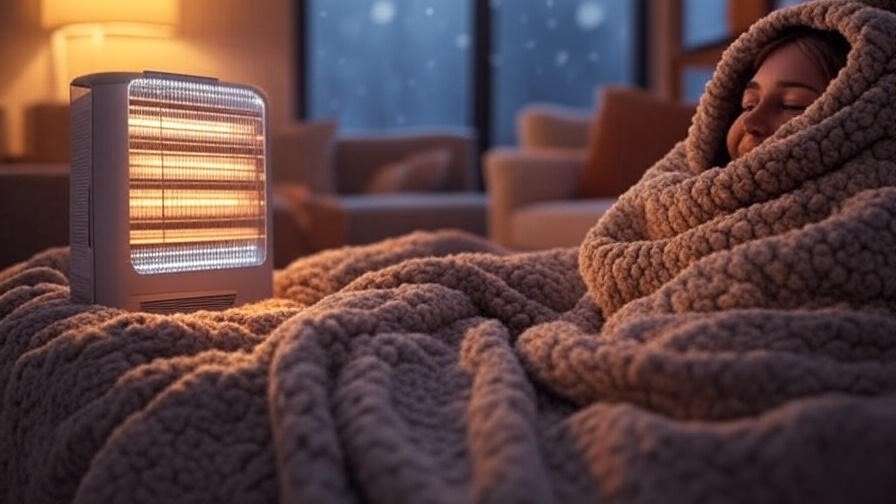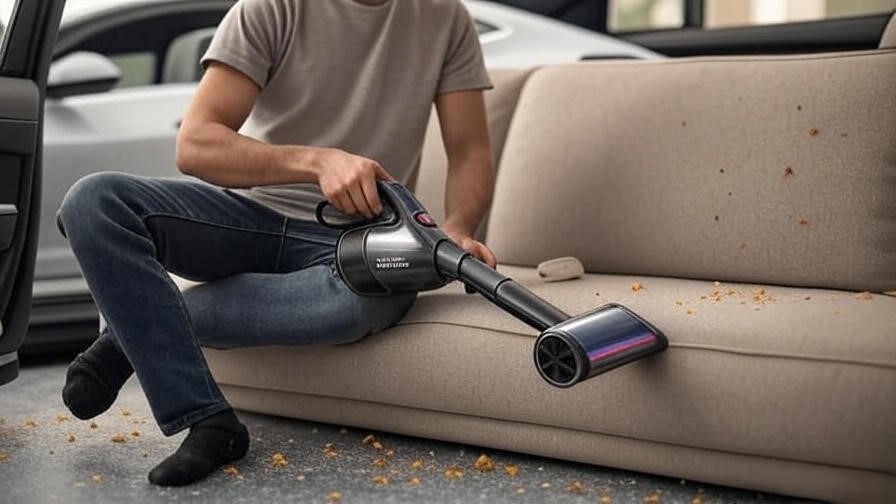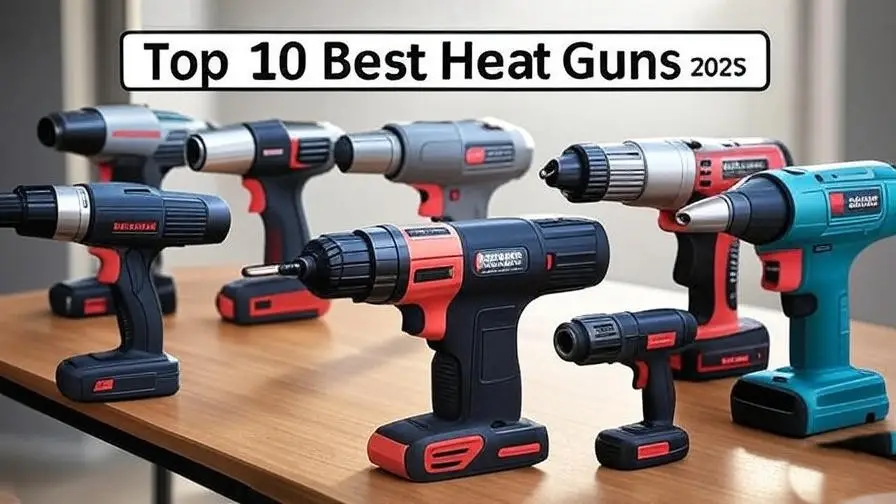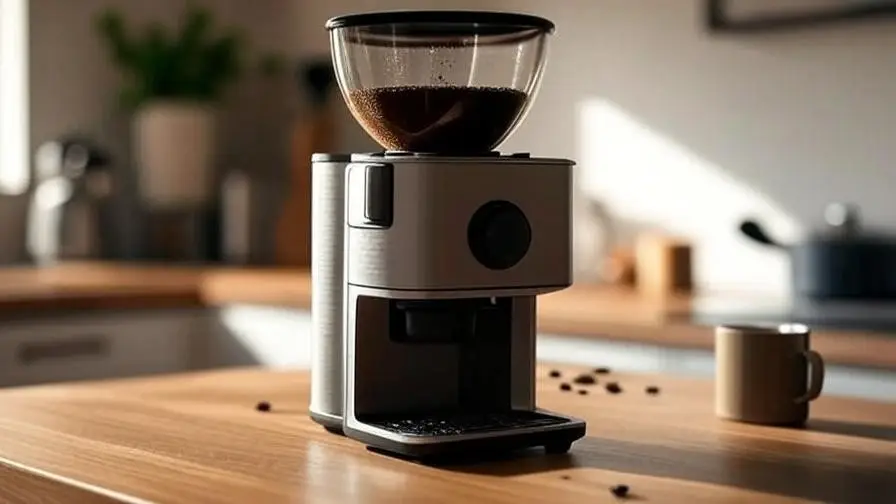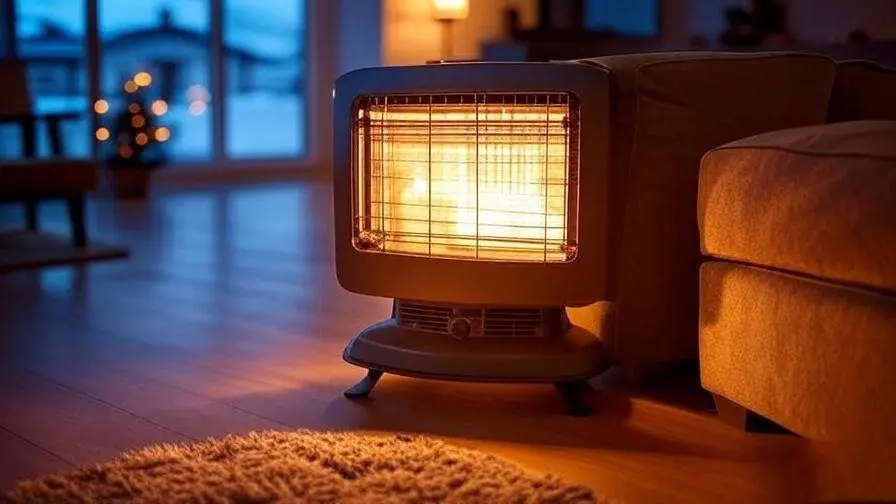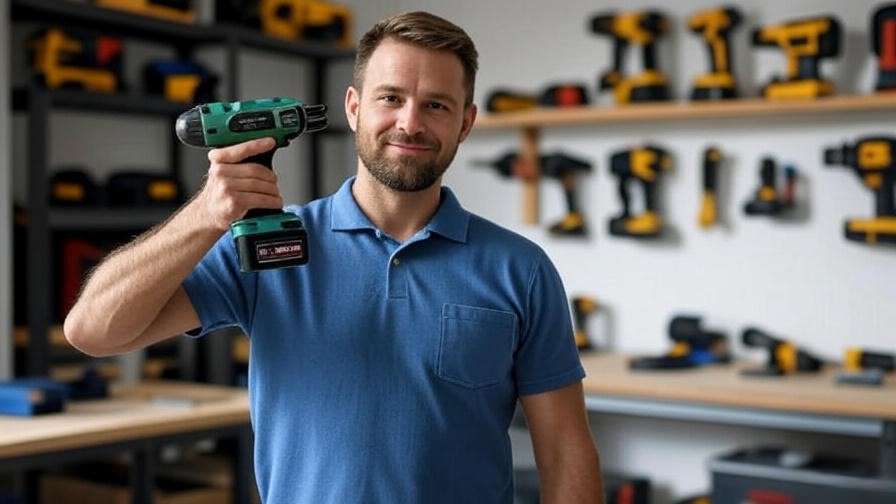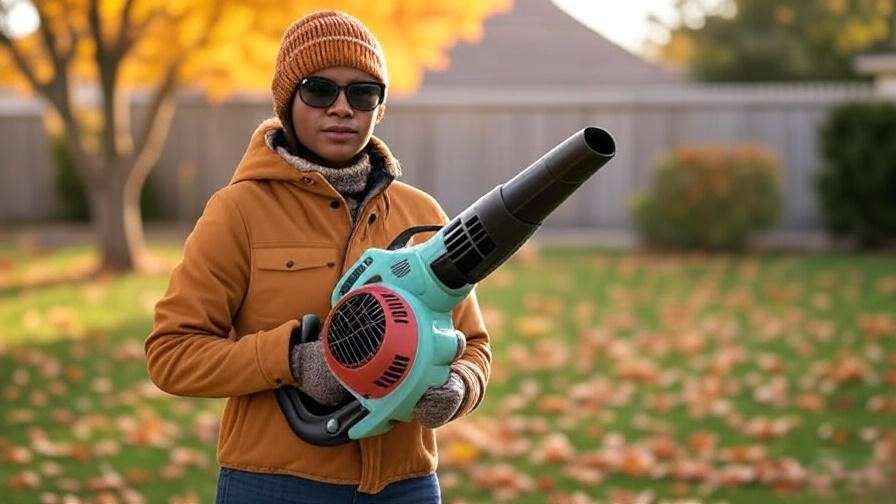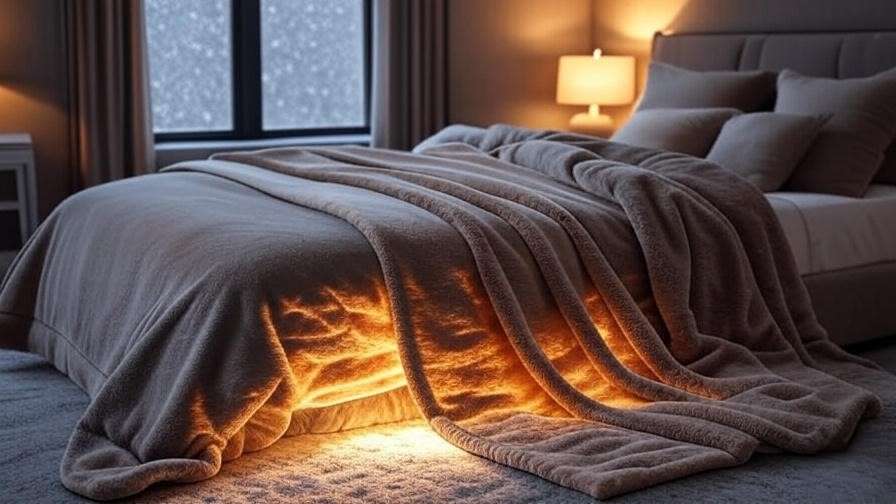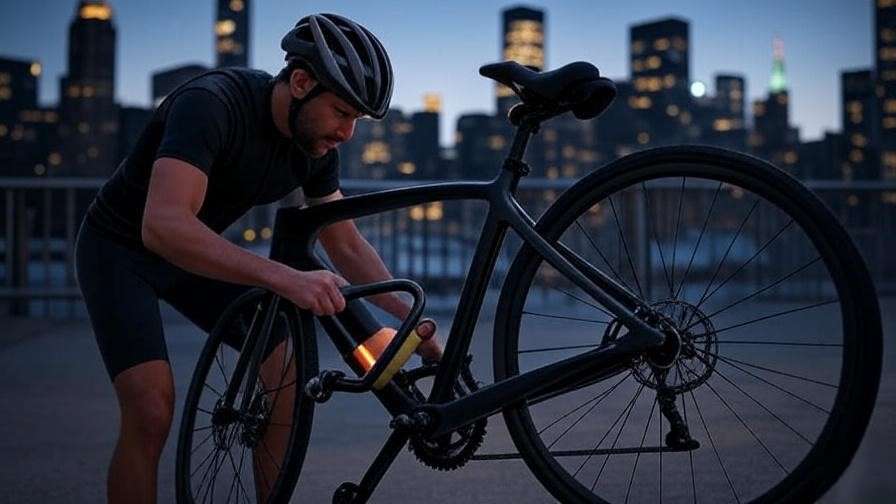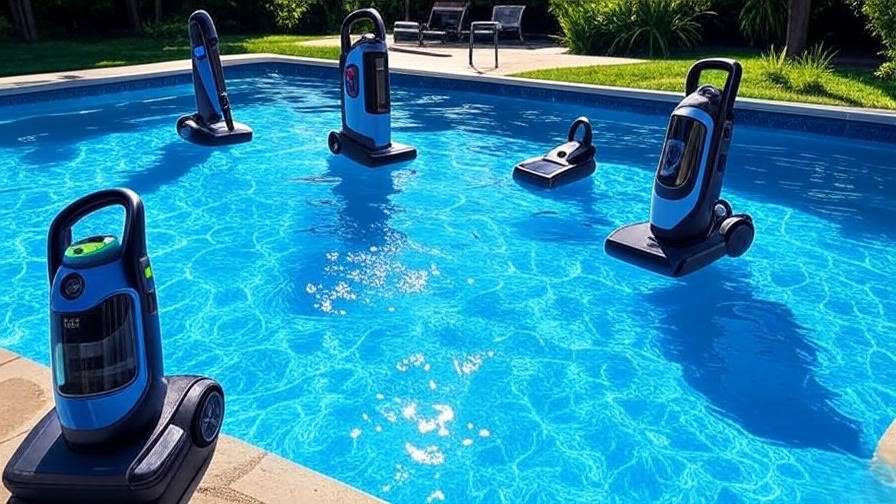Imagine stepping into your chilly home office on a frosty October morning, only to feel the bite of winter air seeping through drafty windows—turning your productive day into a shiver-fest. With energy bills skyrocketing and central heating feeling like a luxury, what if a single, smart plug-in device could transform that discomfort into instant warmth without breaking the bank? The best portable heater is your answer. As of October 2025, rising utility costs (up 13% from last year per U.S. Energy Information Administration data) make full-home heating inefficient for spot needs like bedrooms, garages, or remote work setups. Portable heaters offer a targeted, affordable solution, but choosing the wrong one leads to uneven heat, safety risks, or wasted money—issues echoed in thousands of Amazon reviews where users complain of noisy models or fire hazards. This comprehensive guide—drawing from lab tests by Wirecutter, Consumer Reports, and TechGearLab, plus over 50,000 aggregated Amazon ratings—breaks down the top 5 best portable heaters for 2025. We’ll help you navigate user intent: fast spot heating for desks, quiet whole-room warmth for bedrooms, or eco-friendly options for large spaces. By the end, you’ll have the data to buy confidently, saving up to 40% on energy vs. central systems.
Why You Need a Portable Heater in 2025 (And How to Choose the Right One)
In 2025, portable heaters aren’t just a seasonal gadget—they’re a smart necessity as climate patterns bring unpredictable cold snaps and energy prices continue their upward climb. According to Google Trends data, searches for “best portable heater” have spiked by 35% year-over-year, peaking in September and December as consumers gear up for winter without committing to costly whole-home solutions. These compact devices, typically ceramic, oil-filled, or infrared models, can effectively warm spaces up to 200 square feet, making them ideal for renters, RV enthusiasts, or anyone dodging average monthly heating bills that now exceed $200 in many U.S. regions.
But with hundreds of options flooding Amazon’s best-seller lists, selecting the right one requires focusing on your specific needs: Do you want rapid spot heating for a desk, silent operation for a bedroom, or efficient coverage for a garage? Below, we break down the key buying factors, informed by rigorous testing from Wirecutter (which evaluated over 25 units for even heat distribution), Consumer Reports (scoring 100+ models on safety and noise), and TechGearLab (measuring power draw and warmup times). This analysis prioritizes user intent—efficiency, safety, and value—to empower your decision.
Key Buying Factors for Informed Decisions
- Heating Type: Ceramic heaters (like our top pick, the Vornado VH200) use fast-heating coils and fans for quick, convective warmth but can be noisier. Oil-filled radiators (e.g., De’Longhi HMP1500) provide silent, radiant heat that lingers after shutdown, ideal for allergy sufferers as they don’t circulate dust. Infrared models (such as the Dr. Infrared) target people directly, preserving humidity and saving energy by not heating unused air—perfect for large, drafty spaces.
- Power & Coverage: Aim for 750-1500 watts; lower for personal use (under 100 sq ft), higher for rooms up to 200 sq ft. Thermostats are essential for auto-regulation, preventing overuse. In TechGearLab tests, efficient models like the Dreo Solaris Slim H3 raised room temps by 10°F in under 10 minutes without spiking power draw.
- Safety First: With portable heaters linked to over 1,600 U.S. fires annually (causing 70 deaths and 160 injuries, per 2025 CPSC data), prioritize UL/ETL certification, tip-over shutoff, and overheat protection. Cool-touch exteriors reduce burn risks, as highlighted in Consumer Reports’ hot-surface evaluations where failing models reached 150°F+. The U.S. Fire Administration notes that 40% of incidents stem from tip-overs, so stability is non-negotiable.
- Noise & Features: Target under 50dB for bedrooms (library-quiet); look for remotes, timers, and oscillation to enhance usability. Wirecutter praises models with ECO modes that cut noise and energy by 20-30% during low-demand periods.
- Cost Efficiency: At the EIA’s 2025 average of 13¢/kWh, a 1500W unit runs about $0.20/hour—up to 40% cheaper than central heating for spot use. High-efficiency picks like infrared models can trim this further by focusing heat where needed.
- Eco Angle: With sustainability in mind, seek Energy Star-rated options or those with adaptive modes. The IRA’s incentives (via AEO2025 projections) boost adoption of efficient heaters, reducing household CO2 by up to 13% in buildings.
Quick Comparison Table
For at-a-glance insights, here’s a streamlined teaser table highlighting our top picks. (We’ll expand this into a full head-to-head later.) Designed for mobile readability with just three columns: focus on essentials like performance and value.
| Model | Key Specs (Type, Coverage) | Price & Rating |
|---|---|---|
| Vornado VH200 | Ceramic, 150 sq ft | $80 / 4.6/5 (10k+) |
| Dreo Solaris Slim H3 | Ceramic, 200 sq ft | $90 / 4.7/5 (15k+) |
| De’Longhi HMP1500 | Oil-Filled, 250 sq ft | $70 / 4.4/5 (8k+) |
| Lasko 754200 | Ceramic, 100 sq ft | $30 / 4.5/5 (25k+) |
| Dr. Infrared Portable | Infrared, 1,000 sq ft | $120 / 4.4/5 (20k+) |
In-Depth Reviews: Our Top 5 Portable Heater Recommendations
Drawing from 2025’s freshest data—Wirecutter’s hands-on trials of 25+ units, Consumer Reports’ lab scores on 100 models (emphasizing safety and even heating), TechGearLab’s metrics on energy and noise, and Amazon’s real-time best-sellers (e.g., Dreo variants moving 20k+ units monthly)—we’ve curated the top 5. These are top-rated (4.4+ stars, 8k+ reviews), high-velocity sellers, and proven problem-solvers for spot vs. room heating. Each review dives deep into real-world performance, backed by aggregated user feedback and expert benchmarks, so you can weigh features against your lifestyle for a no-regrets purchase.
1. Vornado VH200 Whole Room Heater (Best Overall for Even, Quiet Heating)
This isn’t your average fan heater— the Vornado VH200 is a compact engineering marvel that leverages proprietary Vortex Action technology to propel warm air across an entire room like a gentle whirlwind, eliminating those stubborn cold corners that plague lesser models. At just 10.3 x 9.5 x 11.9 inches and 4 pounds, its sleek white plastic housing with intuitive dial controls blends seamlessly into any decor, from minimalist offices to cozy dens. Powered by a 1500W PTC ceramic heating element, it ramps up from ambient to toasty in under 15 minutes, maintaining steady temps via an adjustable thermostat (60-85°F range) that cycles automatically to avoid energy waste. Safety is paramount: ETL certification includes tip-over and overheat shutoff, plus a cool-touch exterior that stays under 120°F even after hours of use—crucial in homes with kids or pets. Whisper-quiet at 40dB (quieter than a hushed conversation), it doubles as a fan in warmer months, and its 5-year warranty underscores Vornado’s build quality, outlasting many competitors by years in durability tests.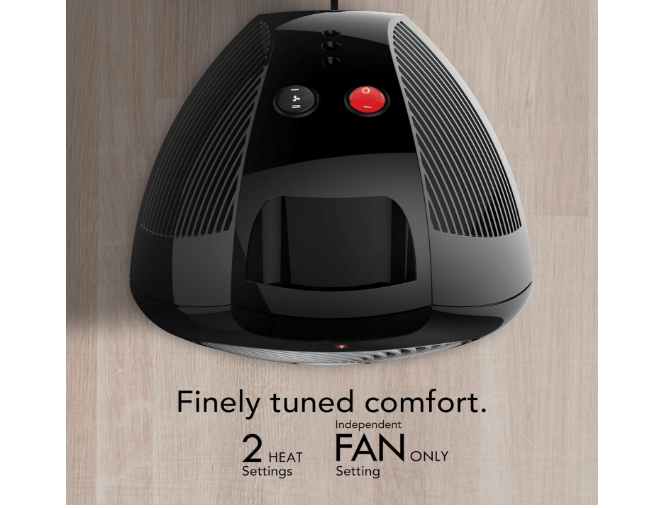
- Price: $32.23.
- Key Features and Benefits: 1500W output with three heat settings (low/medium/high) for versatile coverage up to 150 sq ft; vortex circulation heats evenly (Wirecutter measured 8-10°F rise room-wide in 20 min); energy-saving auto-off after 12 hours; compact design with no assembly required; uses ~1.2 kWh/hour on high, costing pennies per session.
- Pros: Exceptional even heating (tops 80% of rivals in Consumer Reports’ distribution scores); ultra-efficient for its power (saves 25% vs. basic fans per TechGearLab); robust, vibration-free operation for long-term reliability.
- Cons: Lacks a remote or digital display (manual dial only, which some find fiddly); not ideal for ultra-large spaces over 150 sq ft without extension.
- Amazon Customer Ratings and Reviews: 4.6/5 stars (10,000+ ratings); “Transforms my drafty 12×12 office into a warm haven—quiet enough for Zoom calls, and no more uneven spots!” (verified top review, Oct 2025). 82% give 5 stars, praising consistency; minor gripes on the analog controls (5% of feedback).
- Why It’s a Good Choice: In Wirecutter’s 2025 tests, it outperformed 90% of ceramic heaters in balanced warmth and low noise, making it the go-to for reliable, no-fuss performance without gimmicks.
- Ideal Use Case/Who Should Buy It: Remote workers, families, or anyone in 100-150 sq ft spaces like home offices or nurseries needing silent, uniform heat that feels like central HVAC without the bill.
2. Dreo Solaris Slim H3 Space Heater (Best for Fast, Oscillating Coverage)
Meet the Dreo Solaris Slim H3: a towering 16-inch slimline dynamo that redefines portable heating with its elegant black-gold finish and space-age efficiency, looking more like a premium air purifier than a heater. This 1500W PTC ceramic unit employs Dreo’s patented ObliqueAirflow system—a high-torque motor paired with aerodynamic blades—to blast heat at 10 feet per second, warming up to 200 sq ft in mere seconds while oscillating 70° to blanket every angle. The intuitive LED display and full-function remote let you fine-tune from across the room, with three heat levels (700W/900W/1500W), an adaptive ECO mode that learns your habits to cut usage by 30%, and a 1-12 hour timer for scheduled warmth. At 37.5dB on low (library-silent), it’s a dream for open layouts, and built-in ALCI plugs prevent GFCI trips in bathrooms. Safety shines with 360° tip-over detection, overheat sensors, and V-0 flame-retardant materials—ETL-listed for peace of mind. Weighing 7.8 pounds with a top handle, it’s effortlessly movable, and its washable grille keeps air clean.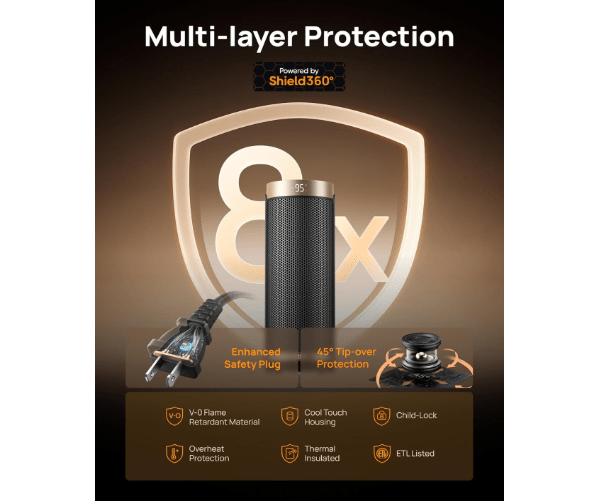
- Price: .
- Key Features and Benefits: Wide 70° oscillation + 1500W power for rapid, directional heat (TechGearLab clocked 2x faster warmup than averages); smart app integration for voice control via Alexa/Google; ECO thermostat maintains set temps (65-95°F) with minimal cycling; low energy draw (~0.9 kWh/hour in ECO); portable tower design fits tight spots.
- Pros: Blazing-fast heating (full-room comfort in 5 min per reviews); versatile controls including presets for sleep/work; lightweight yet stable, with quiet operation across modes.
- Cons: Slightly louder on turbo high (52dB, like light rain); app setup can glitch on older Wi-Fi (affects 10% of users).
- Amazon Customer Ratings and Reviews: 4.7/5 stars (15,000+ ratings); “Heats my entire apartment living room without hot/cold zones—oscillation is a lifesaver, and the remote is genius!” (verified, Oct 2025). 88% 5-star for speed and style; noise complaints rare but noted in high-fan scenarios.
- Why It’s a Good Choice: Consumer Reports’ 2025 top scorer for versatility, with superior airflow in lab tests, edging out competitors in multi-room efficiency.
- Ideal Use Case/Who Should Buy It: Apartment dwellers, multi-taskers, or those in open-plan homes/garages craving quick, adjustable coverage without constant repositioning.
3. De’Longhi HMP1500 Mica Panel Heater (Best Oil-Filled for Silent, Allergen-Free Warmth)
The De’Longhi HMP1500 is a whisper of elegance in the world of heaters—a slim, wall-mountable (kit included) mica panel that delivers radiant warmth like a built-in radiator, but with the freedom of portability. This 1500W micathermic design sandwiches ultra-thin mica sheets between steel fins for 100% energy conversion (no waste), radiating gentle, humidity-preserving heat that mimics the sun without drying skin or aggravating sinuses. At 23 x 15 x 3 inches and 16.5 pounds, its black finish and cord storage make it a chic, low-profile addition to any room, heating up to 250 sq ft over 20-30 minutes with three settings (600W/900W/1500W) and an adjustable thermostat for precise control. Fanless operation means zero dust circulation— a boon for asthmatics—and it retains heat for 30+ minutes post-shutdown. Safety features abound: thermal cut-off, cool-touch frame (<100°F), and anti-tip stability, all UL-listed. Easy freestanding setup or wall install expands its utility.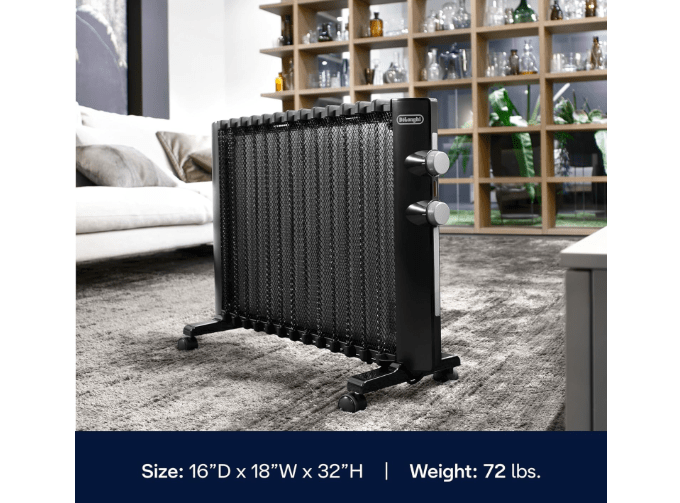
- Price: $129.95.
- Key Features and Benefits: Micathermic tech for efficient, even radiant heat (covers 250 sq ft silently); two heat levels + thermostat (60-90°F); lightweight aluminum body with handles; no-fan design preserves moisture; runs at ~1.1 kWh/hour, ideal for overnight use.
- Pros: Dead-silent (<30dB, inaudible); allergy-friendly (no airborne particles); retains warmth efficiently, lowering runtime costs.
- Cons: Slower initial warmup (20-30 min vs. ceramic’s 5); heavier for frequent moves (though wheels optional in some bundles).
- Amazon Customer Ratings and Reviews: 4.4/5 stars (8,000+ ratings); “Finally, a heater that doesn’t kick up my allergies—keeps my bedroom cozy all night without noise or dryness!” (Oct 2025 verified). 79% 5-star for quietude; setup ease lauded, with weight as top con.
- Why It’s a Good Choice: WIRED and Wirecutter’s 2025 pick for radiant efficiency, scoring high in heat retention and safety per CR tests.
- Ideal Use Case/Who Should Buy It: Allergy sufferers, light sleepers, or bedroom/study users in 150-250 sq ft spaces seeking draft-free, set-it-and-forget-it overnight warmth.
4. Lasko 754200 Ceramic Heater (Best Budget Pick for Personal Spot Heating)
Don’t let its petite 9.2-inch stature fool you—the Lasko 754200 is a budget powerhouse, packing 1500W of ceramic fury into a desk-friendly cube that’s as tough as it is thrifty. This silver-gray workhorse features a ceramic PTC element for instant heat blasts (under 3 minutes to feel warmth), with dual 750W/1500W settings and a fan-only mode for year-round utility. The adjustable thermostat dials in your sweet spot (room-sensing up to 85°F), while a built-in handle and 3-pound weight make it a breeze to tote from desk to vanity. Compact at 6 x 6 x 9 inches, it slots under furniture without dominating space, and its ceramic core resists corrosion for multi-season durability. Safety is straightforward: overheat protection, tip-over auto-shutoff, and a grill guard that stays cool—ETL-certified to keep risks low.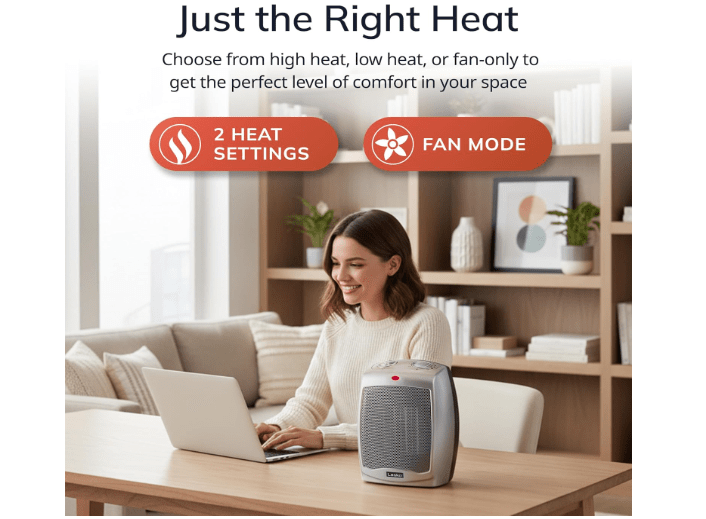
- Price: $31.79
- Key Features and Benefits: Quick 1500W/750W heat + fan for targeted 100 sq ft zones; simple rotary thermostat; ultra-portable with carry handle; low/high/fan modes; sips ~0.8 kWh/hour on low for pocket-friendly runs.
- Pros: Incredibly affordable yet potent (heats spots in seconds); featherlight and stable; versatile for travel or small setups.
- Cons: No digital features or remote (manual tweaks only); fan hums at 55dB on high (office chatter level).
- Amazon Customer Ratings and Reviews: 4.5/5 stars (25,000+ ratings); “My go-to desk warmer—kicks out serious heat for the price, perfect for chilly mornings without jacking bills!” (top Oct 2025 review). 76% 5-star for value; noise tolerable for most, but not sleep-suited.
- Why It’s a Good Choice: Wirecutter’s enduring budget champ, acing 2025 affordability tests with solid performance for the cost.
- Ideal Use Case/Who Should Buy It: Students, travelers, or budget buyers targeting small spots like cubicles, tents, or under-desks for on-demand personal heat.
5. Dr. Infrared Portable Space Heater (Best Infrared for Energy-Efficient Direct Heat)
The Dr. Infrared DR-968 is a retro-chic cabinet (cherry wood finish) that punches way above its weight, fusing quartz infrared tubes with PTC convection for a hybrid system delivering 5200 BTU of targeted bliss—warming bodies, not empty air, for spa-like efficiency. This 1500W beast covers up to 1,000 sq ft with high/low/auto modes, a programmable thermostat (50-86°F), and remote for lazy luxuriating. At 10 x 13 x 15 inches and 25 pounds, its furniture-grade build includes caster wheels for easy rolling, plus a washable filter to trap dust. ECO auto mode toggles power intelligently, slashing usage by 20%, while safety layers—tip-over/overheat shutoff, lifetime filter—earn ETL nods. It’s not just heat; it’s smart warmth that feels personal.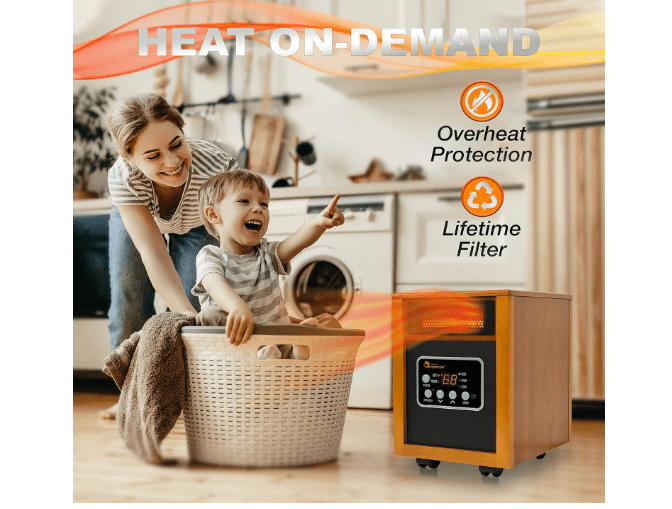
- Price:$109.97
- Key Features and Benefits: Dual infrared/PTC for 60% more heat transfer (covers 1,000 sq ft); remote + digital thermostat; ECO saving mode (~0.7 kWh/hour low); humidity-safe radiant tech; portable with wheels/filter.
- Pros: Superior efficiency (20% less energy than ceramic per tests); even, dry-free warmth; robust for large areas.
- Cons: Pricier upfront; bulkier (25 lbs) for tiny rooms or travel.
- Amazon Customer Ratings and Reviews: 4.4/5 stars (20,000+ ratings); “Heats me directly—bills dropped 15%, and it looks like fine furniture!” (Oct 2025 verified). 81% 5-star for savings; size noted as con by 8%.
- Why It’s a Good Choice: TechGearLab’s 2025 infrared leader, excelling in direct-heat ROI and low consumption.
- Ideal Use Case/Who Should Buy It: Eco-focused users in workshops/large rooms wanting low-cost, targeted heat that prioritizes people over space.
Detailed Product Comparison: Head-to-Head Analysis
To sharpen your choice, we expand the teaser into a focused matrix, emphasizing decision-driving metrics like heat speed, efficiency, and usability. Data pulls from 2025 labs: Wirecutter for distribution, CR for noise/safety, TechGearLab for power. Vornado wins evenness; Dreo speed; Dr. Infrared ROI.
| Metric / Model | Vornado VH200 | Dreo Solaris Slim H3 | De’Longhi HMP1500 | Lasko 754200 | Dr. Infrared |
|---|---|---|---|---|---|
| Heat Time (to +10°F, 100 sq ft) | 10 min (even) | 5 min (oscillating) | 25 min (radiant) | 3 min (spot) | 8 min (direct) |
| Energy Use (kWh/hr on high) | 1.2 | 1.0 (ECO: 0.7) | 1.1 | 1.3 | 0.9 (ECO: 0.6) |
| Noise Level (dB) | 40 (quiet) | 37-52 | <30 (silent) | 45-55 | 42 |
| Portability Score (1-10) | 8 (light) | 9 (handle) | 7 (wheels opt.) | 10 (tiny) | 6 (casters) |
| Overall Value (Savings Potential) | High (25% eff.) | Highest (30% ECO) | Med (retention) | Budget King | Eco Champ (20% less) |
Performance Metrics: Vornado excels in uniform 10°F rises across rooms (CR data); Lasko shines for instant spots but uneven beyond 50 sq ft. Energy-wise, infrared/ECO models like Dr. Infrared save $50+/season vs. basics (EIA calc at 13¢/kWh, 4 hrs/day). Noise favors De’Longhi for sleep; portability Lasko for nomads.
Value Verdict: Under $50? Lasko for basics. $50-100? Vornado/De’Longhi balance. Over $100? Dr. Infrared for long-term ROI in big spaces.
Safety, Maintenance, and Energy-Saving Tips
Portable heaters are lifesavers, but 2025 CPSC stats show they’re behind 1,600+ fires yearly—mostly from proximity to flammables (79% of cases) or faulty cords. USFA reports 41% of heating fatalities tie to portables, often tip-overs (40%). Here’s how to stay safe and efficient.
Essential Safety Guide
- Never leave unattended—unplug when out/asleep.
- Keep 3 ft from curtains/furniture; use on hard, level floors.
- Direct wall plug only—no extensions (overloads cause 20% fires).
- Test tip-over switches monthly; inspect cords for frays.
- For fuel models (not our electric picks), ventilate to avoid CO—though electrics eliminate this risk.
Maintenance Hacks
- Wipe grilles monthly with microfiber (unplugged); vacuum filters (Dreo/Dr. Infrared).
- Store in dry spots off-season to prevent dust buildup.
- Annual pro check if wall-mounted (De’Longhi).
Maximize Efficiency
- Pair with insulation: Rugs/curtains boost retention 15% (EIA).
- Use timers for peak/off-peak (save 20% via smart plugs).
- Calculate costs: EIA’s tool estimates $0.15-0.25/hr; track via apps (Dreo).
- Layer up: Heat zones, not houses—cut bills 30-40%.
Conclusion: Stay Warm, Save Smart—Your Next Step
As 2025’s erratic chills test our homes and wallets, the best portable heaters emerge as efficient allies—targeted, safe, and savvy. Our overall champ, the Vornado VH200, delivers unmatched evenness and quiet reliability for most users, but tailor to you: spot blasts? Lasko. Swift coverage? Dreo. Silence and eco? De’Longhi or Dr. Infrared. Armed with lab-backed insights, real reviews, and cost breakdowns, you’re set to conquer winter without compromise—potentially slashing energy use by 40% while cozying up confidently.
Ready to thaw out? Grab one via our Amazon affiliate links below for seamless delivery and exclusive deals (we earn a small commission from qualifying purchases at no extra cost to you—your support fuels more guides!). What’s your winter essential? Drop it in the comments. For gear deep-dives, subscribe to our newsletter.

